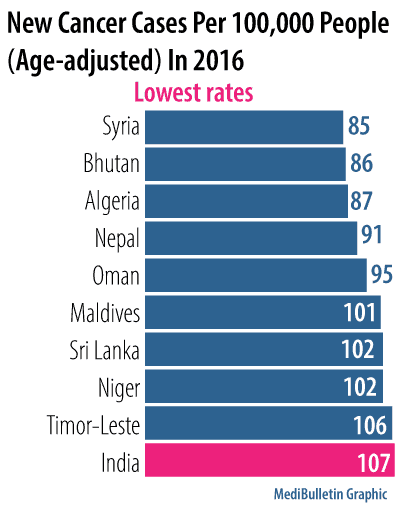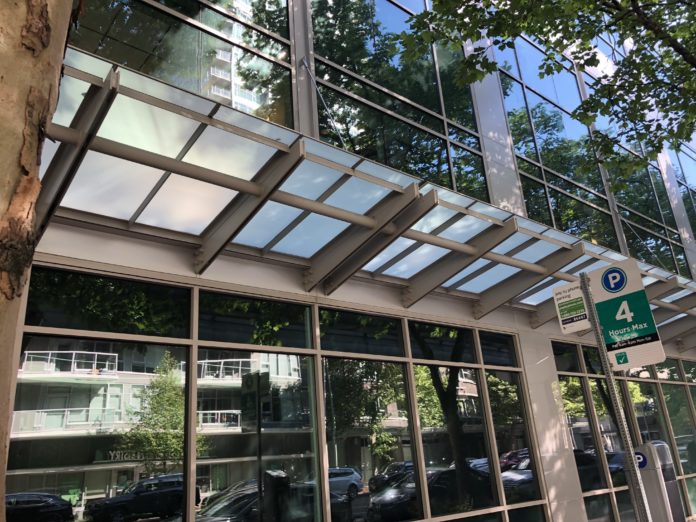New cancer cases as a proportion of the population is among the lowest in India
India has among the lowest rates in the world of new cancer cases.

In 2016 there were 106.6 new cancer cases in the country for every 100,000 population. While this is far lower than the rates for countries like Australia (743.8), New Zealand (542.8) and the United States (532.9), it is higher than most of its neighbours like Bhutan (86), Nepal (90.7) and Sri Lanka (101.6). The 135 crore population though means the absolute numbers of new cases of India is staggering.
These are the findings of the most comprehensive analysis of cancer-related health outcomes and patterns ever conducted. The study, published in JAMA Oncology, covers 1990 to 2016; it is part of the Global Burden of Disease (GBD) study, a comprehensive effort to quantify health internationally.
It also found that lifestyle-related cancers, such as lung, colorectal, and skin cancers, have increased globally over the past decade.
“Vital prevention efforts such as tobacco control, dietary interventions, and broader health promotion campaigns need to be scaled up in response to this rise in lifestyle-related cancers.”

“While the increase in lung, colorectal, and skin cancers over the past decade is concerning, the prevention potential is substantial,” said Dr. Christina Fitzmaurice, Assistant Professor of Global Health at the Institute for Health Metrics and Evaluation (IHME) at the University of Washington, whose organization coordinated the study. “Vital prevention efforts such as tobacco control, dietary interventions, and broader health promotion campaigns need to be scaled up in response to this rise in lifestyle-related cancers.”
Researchers reviewed 29 cancer groups, including lung, breast, prostate, skin, colorectal, pancreatic, stomach, and liver cancers, as well as leukemia and other cancer groups. The study provides findings by age and sex for 195 countries and territories.
While lifestyle-related cancers saw a universal increase from 2006 to 2016, several cancers from infectious causes – including cervical and stomach cancers – decreased over the same time period.
“Ensuring universal access to health care is a vital prerequisite for early detection and cancer treatment. And improving access to advanced diagnostic technologies not commonly available in low-SDI countries is a critical step toward achieving health equity globally,” said Fitzmaurice.
Additional key findings include:
• In 2016, there were 17.2 million cancer cases worldwide, an increase of 28% over the past decade. There were 8.9 million cancer deaths the same year.
• While cancer death rates decreased in a majority of countries from 2006 to 2016, incidence rates conversely increased.
• Breast cancer was the leading cause of cancer death in women.
• Lung cancer was the leading cause of cancer death in men; it was also the leading cause of cancer mortality globally, accounting for nearly 20 percent of all cancer deaths in 2016.
• Prostate cancer is one of the most common causes of cancer incidence and death in men.


